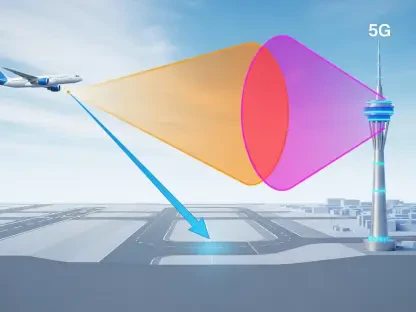The emergence and adoption of ATSC 3.0 in recent years have marked a significant transition in the broadcasting landscape. This next-generation broadcast standard promises not only to enhance video and audio quality but also to revolutionize how viewers engage with content through interactive and personalized features. As industries pivot towards this technology, it presents both promising advancements and a series of challenges that could reshape viewing experiences and the broadcasting industry at large.
Understanding ATSC 3.0 Technology
ATSC 3.0 represents a departure from traditional broadcasting methodologies, integrating Internet Protocol technology to open up new avenues for content delivery and interaction. This advanced standard allows broadcasters to deliver ultra-high-definition 4K broadcasts, improved audio precision through immersive sound technology, and targeted advertising. This modernization is critical in an era where digital streaming is rapidly becoming the norm, and traditional broadcasters are seeking to maintain relevance in this shifting technological landscape.
Features and Performance Analysis
Advanced Video and Audio Quality
One of the standout features of ATSC 3.0 is its ability to broadcast in 4K resolution, offering viewers crisp pictures combined with high dynamic range (HDR). This improvement substantially raises the bar for broadcast quality, allowing for more detailed and vibrant visuals. Additionally, the standard supports next-generation audio technologies that provide an immersive sound experience, significantly enhancing the overall sensory engagement of viewers.
Enhanced Interactivity and Personalization
ATSC 3.0 also brings considerable improvements in interactivity and personalization. Through the integration of broadband and broadcasting, viewers are offered unique opportunities to interact with televised content in real time. Features such as personalized advertising and real-time audience interaction cater to individual preferences, creating an engaging viewing experience tailored to diverse audiences. This capability aligns with broader market trends prioritizing user-centric technologies.
Current Developments and Emerging Trends
The recent evolution of ATSC 3.0 has spotlighted several key trends, most notably the growing discourse around digital rights management and security. As newer consumer devices adopt this standard, a lively discussion emerges regarding the balance between advanced capabilities and the safeguarding of content through stringent security measures. This ongoing debate is shaping how broadcasters and manufacturers approach technological integration and user privacy concerns.
Practical Applications and Use Cases
Industries far and wide are beginning to recognize the potential applications of ATSC 3.0. Its widespread adoption is evident in areas like enhanced emergency alert systems, which can now provide geo-targeted alerts with precision and detail. Additionally, the technology’s ability to support interactive advertising and real-time data broadcasting has piqued the interest of marketers aiming to leverage these capabilities for more effective consumer engagement.
Challenges and Limitations
Despite its advantages, ATSC 3.0 faces several challenges, primarily concerning digital rights management and issues around secure content delivery. These technical barriers can impede the user’s full engagement with its capabilities. Moreover, there are concerns over regulatory frameworks and the technological readiness of receiving equipment, which may hinder widespread adoption and compatibility across various consumer devices.
Future Directions and Developments
Looking ahead, ATSC 3.0 is poised to influence the broadcasting industry profoundly. As stakeholders work on addressing current limitations, including bolstering secure content delivery and supporting a broader range of compatible devices, the integration of this technology is expected to accelerate. Continued innovation in this area will likely drive further personalization, interactive and immersive content experiences, and newer commercial opportunities for advertisers and broadcasters.
Conclusions and Insights
ATSC 3.0 has already begun redefining the broadcasting landscape with its progressive features and potential for interactivity. While there are hurdles to overcome regarding regulatory compliance and securing broadcast content, the technology lays the groundwork for a more interactive and engaging viewer experience. The industry must continue to balance technological advancement with user privacy and security concerns, shaping the future of television broadcasting.









